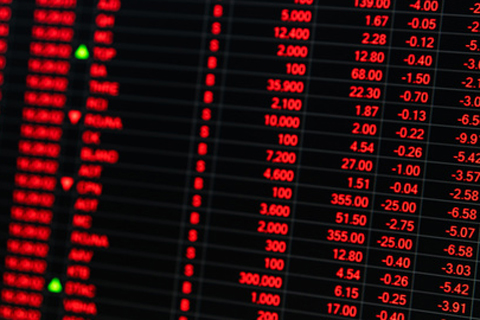Eurofer: Negative trend in the steel market observed in 2023 has persisted
by David Fleschen

According to Eurofer, the negative trend in the steel market observed in the first half of 2023 has persisted and intensified over the last three quarters. The severe consequences of the war in Ukraine and the deteriorating manufacturing outlook, combined with the overall economic environment, continued to take their toll. Apparent steel consumption in the EU decreased by 3.1% in the first quarter of 2024, following a rise of 2.9% in the preceding quarter, which was primarily due to the comparison with the very low volumes seen one year earlier. After a significant recession of 8.3% in 2022, persistent downside factors such as ongoing conflicts, uncertainty surrounding energy prices, and inflation, along with a worsened economic outlook, further negatively impacted apparent steel consumption in 2023. Eurofer's data reveal a more pronounced contraction of 9% compared to 2022, marking the fourth annual recession in the last five years.
This downward trend is also set to impact the anticipated rebound for this year. In 2024, conditional on more favorable developments in the industrial outlook and increased steel demand, apparent steel consumption is projected to recover at a lower rate than previously estimated (1.4% vs. 3.2%). Eurofer emphasizes that the overall evolution of steel demand remains subject to very high uncertainty. Moderate quarterly improvements in apparent steel consumption are expected to continue throughout 2024, although volumes are still expected to remain below pre-pandemic levels.
In the first quarter of 2024, apparent steel consumption dropped by 3.1%, following an increase in the preceding quarter of 2.9%, which was largely due to the comparison with very low volumes seen one year earlier. The total volume in the first quarter of 2024 stood at 31.9 million tonnes.
The current downturn in EU apparent steel consumption, reflecting poor demand conditions, began in the second quarter of 2022 due to war-related disruptions, unprecedented rises in energy prices, and production costs. Demand conditions worsened considerably during the second half of 2022, and this negative cycle continued until the fourth quarter of 2023, as a result of growing global economic uncertainty, high interest rates, and overall manufacturing weakness.
Domestic deliveries mirrored developments in demand, contracting by 5.8% after an increase of 1.3% in the preceding quarter. In 2022, deliveries plummeted by 9.1%, reflecting the sharp deterioration in demand. As a result of protracted negative developments throughout the year, in 2023, domestic deliveries markedly dropped again by 4.6%.
Imports into the EU, including semi-finished products, increased by 12% in the first quarter of 2024, following a similar rise in the preceding quarter of 11.3%. Eurofer notes that the drops in imports recorded in the previous quarters essentially reflected weak demand conditions. Therefore, the share of imports out of apparent consumption has remained considerably high in historical terms throughout 2023 and up to the first quarter of 2024, reaching 27%.
In the first quarter of 2024, the Steel Weighted Industrial Production index (SWIP) dropped by 1.9% after a marginal increase of 0.5% in the previous quarter. EU steel-using sector output had continued to grow, albeit at a slower pace, showing unexpected resilience despite the prolonged impact of Russia’s invasion of Ukraine, overall manufacturing weakness, global geopolitical tensions, and above-average energy prices.
The latest developments in the SWIP index were a combination of a continued downturn in the construction, mechanical engineering, domestic appliances, and metalware sectors, only partly compensated by the continued growth in the automotive sector. The construction sector already entered a recession in the third quarter of 2022 and saw its seventh consecutive quarterly drop (2.3%, after 0.1% in the preceding quarter), and its recessionary trend is expected to continue throughout 2024. The positive trend in overall SWIP, which began after the pandemic, continued up to the fourth quarter of 2023, despite soaring energy prices impacting production costs, component shortages, and lower output starting to affect total production activity in steel-using sectors in the second half of 2022. The deterioration of the economic and industrial outlook in the EU – particularly due to high inflation and the subsequent interest rate hike by the European Central Bank (ECB) – had only a limited impact on steel-using sectors’ output up to the end of 2023. The construction sector, which accounts for 35% of steel consumption in the EU, was the only significant exception.
Ongoing economic uncertainty is set to continue taking its toll on growth in the upcoming quarters. Eurofer expects 2024 to be characterized by unpredictability, stemming from energy price levels, continued weakness in steel demand, inflation, and interest rate-driven economic challenges.
Source: Eurofer, Photo: Fotolia

